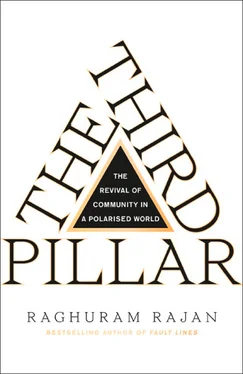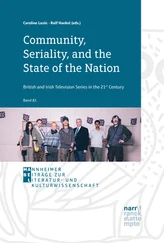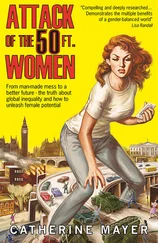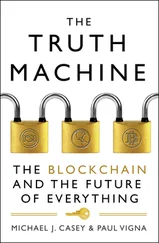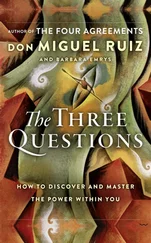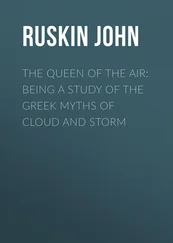Mill thus sought to restore free will’s role in the vibrancy and variety of human existence that Calvin had rejected. Calvinism emphasised obedience – ‘You have no choice; thus you must do, and not otherwise: “whatever is not a duty, is a sin.” Human nature being radically corrupt, there is no redemption for anyone until human nature is killed within him.’ Instead, Mill argued that ‘Pagan self-assertion’ is as much an element of human worth as ‘Christian self-denial’, that it is ‘not by wearing down into uniformity all that is individual in themselves, but by cultivating it, and calling it forth, within the limits imposed by the rights and interests of others, that human beings become a noble and beautiful object of contemplation’, and ‘in proportion to the development of individuality, each person becomes more valuable to himself, and therefore capable of being more valuable to others.’ He declared that ‘genius can only breathe freely in an atmosphere of freedom,’ for ‘the general tendency of things throughout the world is to render mediocrity the ascendant power among mankind.’
Mill’s was thus an attack on the stultifying effects of the community, the ‘despotism of custom’. He viewed the freedom of trade, contracts, and markets as consistent with his beliefs on liberty. This also meant limits on the state, for ‘where everything is done through the bureaucracy, nothing to which the bureaucracy is really adverse can be done at all.’ Instead, the state should be an ‘active circulator and diffusor, of the experience resulting from many trials … [enabling] each experimentalist to benefit by the experiments of others; instead of tolerating no experiments but its own.’
The state and the market had grown together from the crumbling edifice of feudalism. The constitutional limitations on the state that we traced in the last chapter did not shrink the state. Instead it helped the state build out its military and fiscal capabilities as it gained access to finance. Once the state had created a framework to ensure security and protect property rights, the proponents of laissez-faire started questioning how much more it should do. Smith and Mill were not rabidly antigovernment. Smith, for example, accepted a role for the state in education, as well as other services that would not be privately provided. For these reasons, he argued that the state in a civilised country would be larger than in a barbaric one. 8Yet these nuances were ignored, as were his asides on the perfidy of businessmen if they were entrusted with their own regulation. Instead, public debate became focused on steadily eliminating any restraints on business practice, as well as any protections to labour.
Perhaps more than anyone else, the Reverend Thomas Robert Malthus epitomised the heartless side of liberalism, when taken to its extreme. In the various editions of his Essay on the Principles of Population published in 1798, he emphasised the tendency of man to reproduce faster than food supply. Man could restrain himself through self-imposed checks like delayed marriage or sexual abstinence, but Malthus did not believe these would work. Instead, disease, war, and famine would be the natural checks on mankind’s lack of self-control. No wonder historian Thomas Carlyle termed economics ‘the dismal science’! Malthus was wrong. Humans do not have an uncontrollable urge to reproduce. Indeed, prosperity has been a powerful contraceptive, with people becoming less willing to have children, even as they can afford more of them. Fertility rates for women are now below population replacement rates, not just in rich countries but in a number of emerging markets. Nevertheless, his views offered those who opposed even humanitarian government aid a theoretical rationale. Any relief schemes for the unemployed or the poor only encouraged them to reproduce more, and thwarted natural checks and balances. The indigent should be left free to starve, for only through a market-induced cull would succeeding generations have a better life.
Even if such callous theorising was never actually translated into action, it did help harden policies toward the poor and the destitute. As the eminent historian and sociologist Karl Polanyi pointed out, the Poor Law in England, which mandated parish support for the indigent, was made harsher in 1834, especially for able-bodied males. This was just as difficult economic times and the new machines of the Industrial Revolution were putting thousands out of work. 9Some tried to put a better light on these policies, arguing they placed the community back in charge of any voluntary support, others claimed rich farmers were misusing Poor Law subsidies. There was some truth to these explanations. It was also true that Parliament was dominated by the propertied well-to-do, who had been complaining about the high taxes they had to pay before the Poor Law was reformed. Clearly, they were also voting for their pecuniary interests.
With the demise of feudal institutions, the powerful no longer had an obligation to the weak in the community, while market fluctuations and automation left workers, especially those who had left their traditional communities, utterly exposed. Something between the extreme individualism of unregulated markets and the enforced collectivism of an authoritarian, overweening state had to be rebuilt on the ashes of feudalism. Before getting to that, though, what did a market freed from all restraint look like?
THE UNBRIDLED MARKET
Initially, it resembled the perfect competition of textbooks, with producers competing with one another to give the consumer the best deal, but this did not last. For as Adam Smith recognised, competition drove down profits, making any producer’s life greatly uncertain. The inexorable political tendency of a free, unfettered, unregulated market was for the producers, after experiencing the rigors of competition, to attempt cartelisation.
John D. Rockefeller, the richest man in the world in his time, made his money in rock oil or petroleum, in the early days of the industry when oil’s primary uses were for fueling lamps and lubricating steam engines. Rockefeller was not attracted to the risky business of prospecting for oil. Not only was unscientific drilling more likely to unearth dry wells than oil, excess production whenever oil was found in a locality could bankrupt producers as prices plunged. 10Rockefeller wanted a more stable business, and he found it in oil refining in Cleveland, the urban portal to Oil Creek, Pennsylvania, where oil had been discovered first. As Rockefeller worked to make his refinery the lowest-cost producer – at one point reducing the number of drops of solder on the tin cans used to carry kerosene from forty to thirty-nine after checking that any further reduction would cause the can to leak – he managed to drive out the truly incompetent and gained market share. 11Yet many, having sunk money in their investments, and having debts to pay, refused to quit, and kept the price of refined products low – so long as the price was a little more than their incremental cost of refining, the zombie producers staggered on. At one point in the 1870s, refining capacity was three times greater than demand. 12
Rockefeller wanted to bring order to refining, and his first target was the twenty-six remaining independent Cleveland refiners. In 1872, as Ron Chernow details in his biography of Rockefeller, Rockefeller struck a deal with the railroads serving Cleveland, whereby Rockefeller and his cartel would get discounts (from the posted transport price) for the crude and refined oil they shipped. More egregious, the railways agreed to pay the cartel for every barrel shipped by the competing independent non-cartel refiners. Effectively, this meant the railways would face a higher cost to transport non-cartel products, and thus would have to charge the cartel’s competitors more. 13In addition, the cartel was to get full information about the oil shipped by competitors. In exchange, the three participating railroads each got a fixed share of the oil that the cartel shipped, and fixed transport fees, thereby eliminating the cutthroat competition they otherwise engaged in. The arrangement would bring stability to their revenues. Rockefeller’s keen business sense helped him recognise that both refiners and railroads might want to cartelise, and the combination would be deadly to those not in the cartel.
Читать дальше
